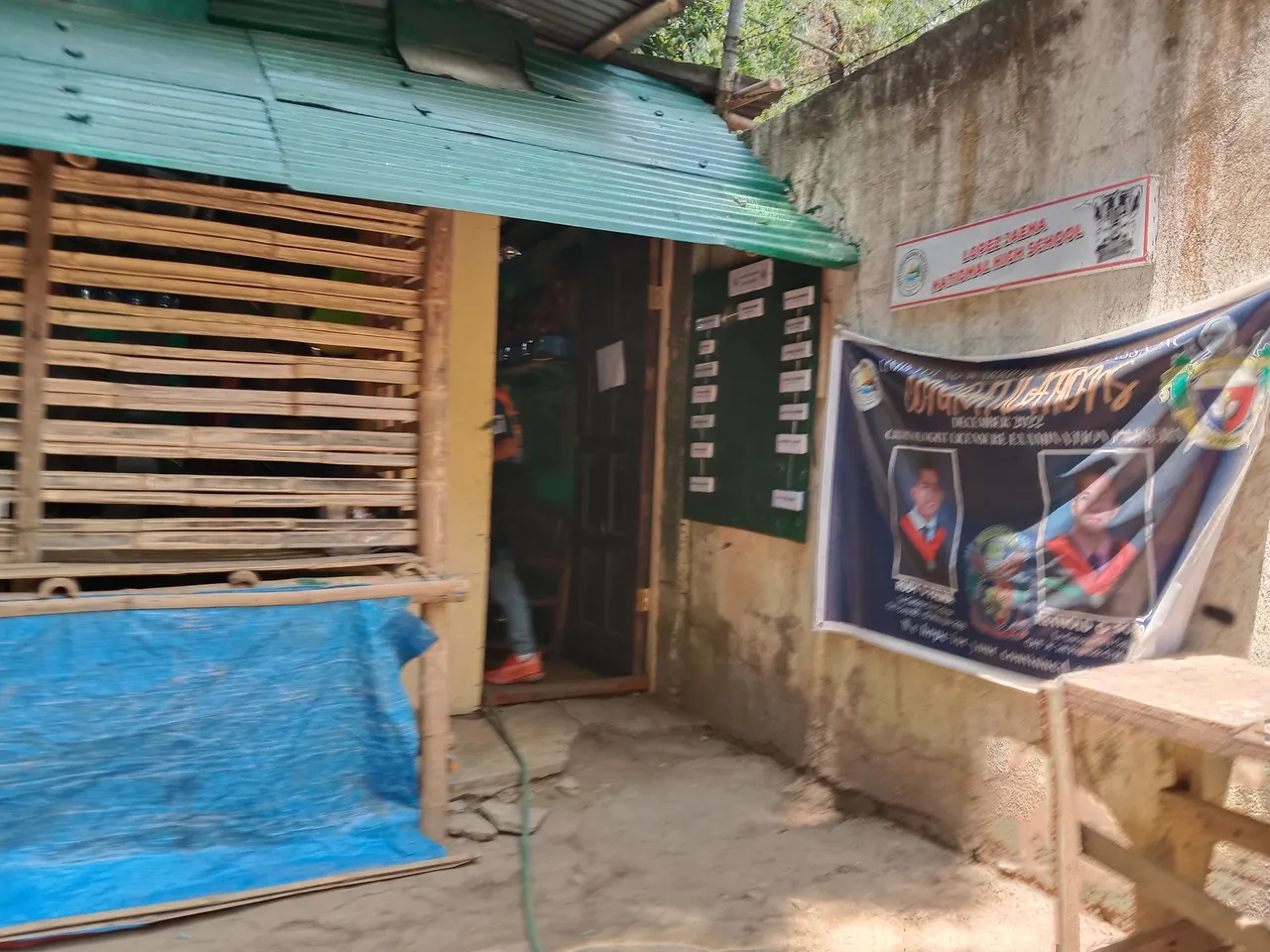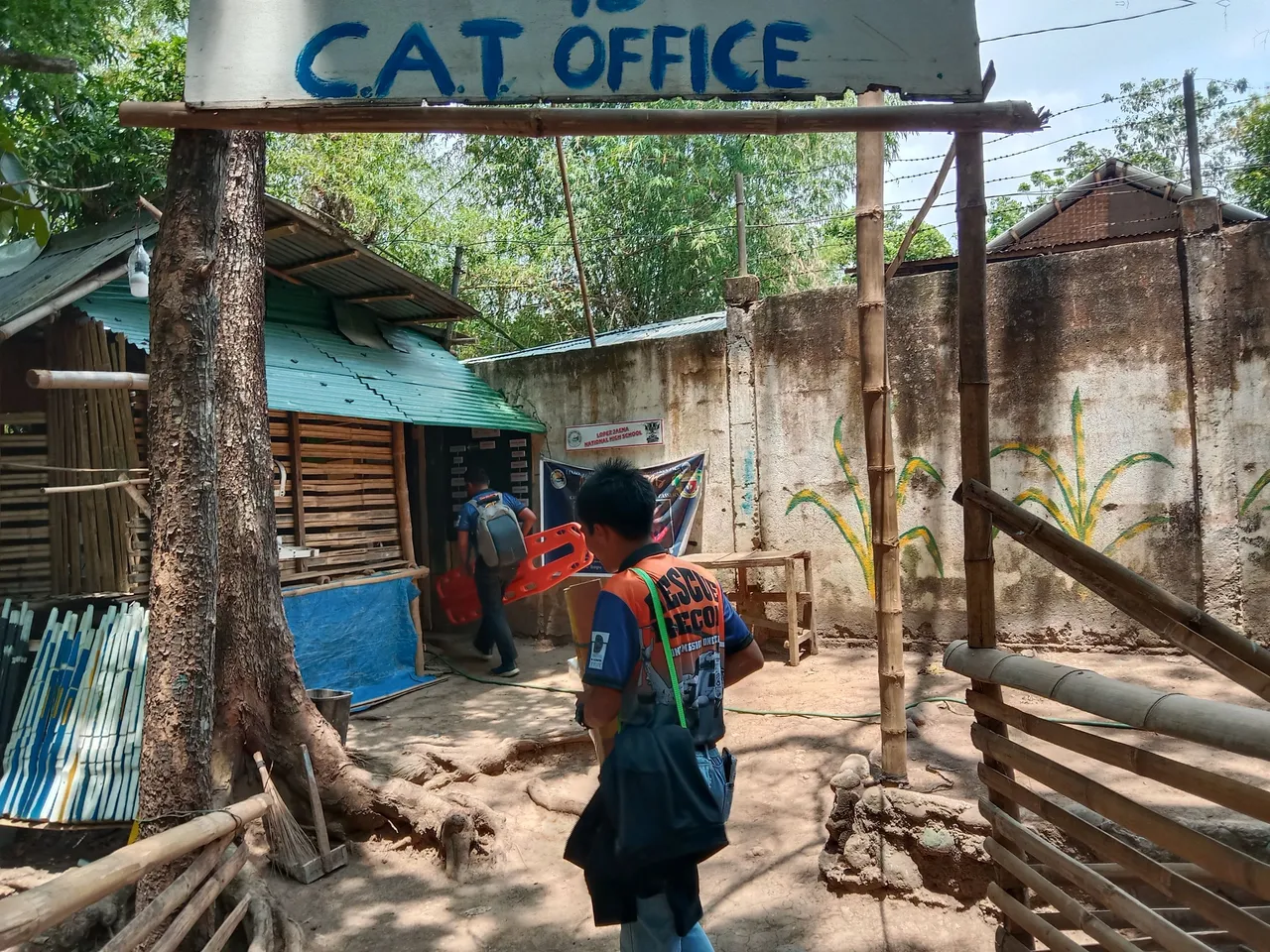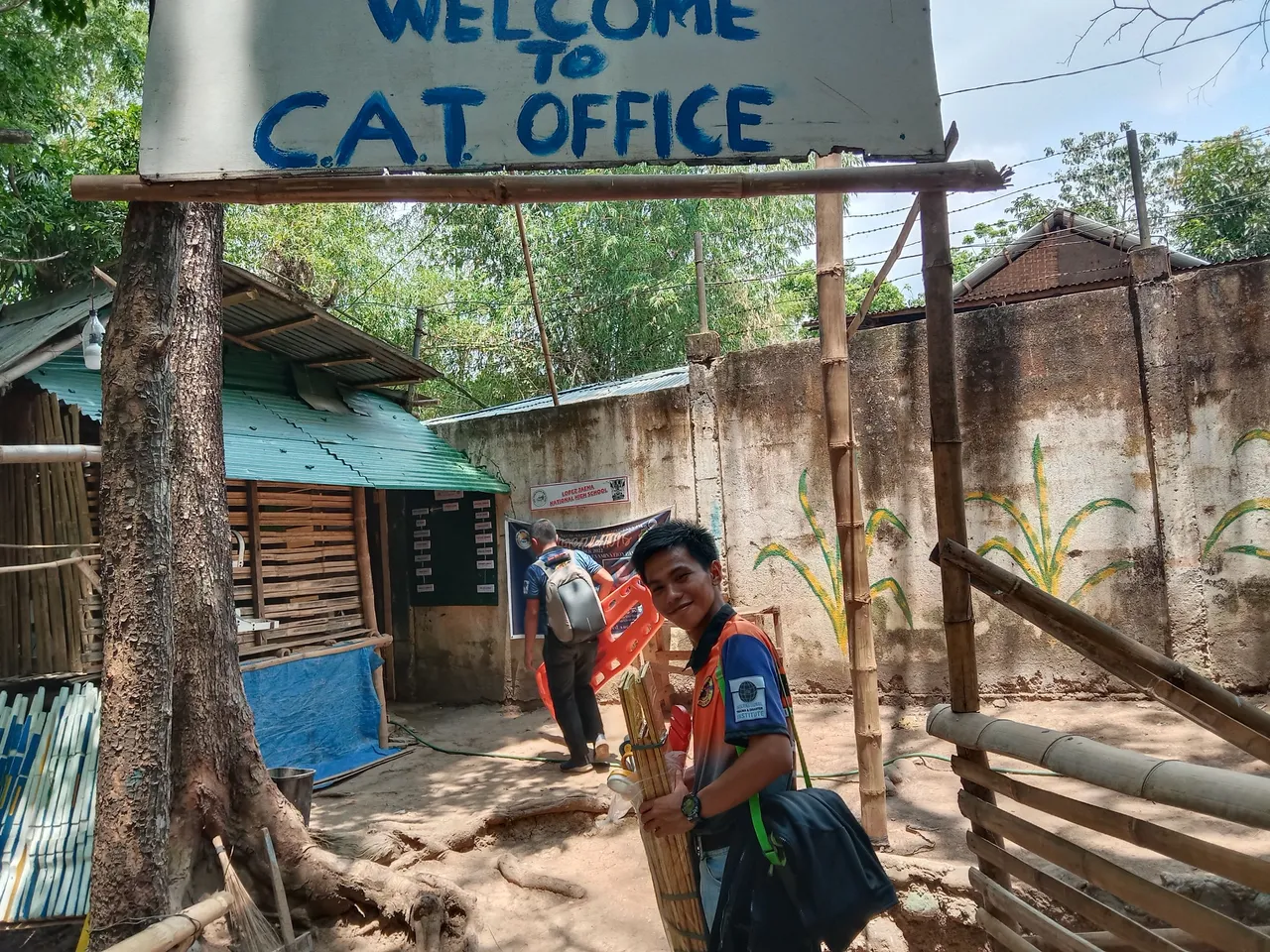Growing up, I have seen lots of people die from mishandling their injuries or illness because they are not educated enough on how to treat them properly, or how to administer an immediate treatment at least before the medical experts intervene. It's unfortunate to witness something like that; it's why I have grown interest on such topics of Emergency Response, First Aid, and Rescue. I grabbed the opportunity when the chances came knocking on my door, for me to learn these things.
Aside from gaining experiences to polish my skills in this field, in a way, I'm returning the favor to those people who has the same interest to learn. Voluntarily, it is my joy to share my knowledge to those who is in need of it. This time, I have another chance to teach as we were requested by one of our Instructors in ERT to teach his Senior High School students. This falls under their DRRR (Disaster Risk Reduction and Readiness) subject.
It made me think that they're luckier than me in this aspect. I have also took up that subject during high school but we were not given lectures about Emergency Response and Basic First Aid. Instead, we focused on possible disasters that could affect the structure of a building, and ways to prevent further damages to the infrastructures, since STEM (Science, Technology, Engineering, and Mathematics) has the basics of Civil Engineering. It was a knowledgeable class but I think it would be better if we also had this, just in case of disasters and the possible casualties along with it.
Ola! Lopez Jaena!
The Senior High School is located outside Bacolod City. It was almost an hour ride by bus, as the location is in Lopez Jaena, Murcia. We have to travel early since we have to start at 8:00 am. We were greeted by the guards and teachers when we arrived. Most of them were acquainted to our Instructors and former students of them, too. We were introduced to their CAT (Citizenship Advancement Training) office and heard a lot of its history while having a cup of coffee made by the accommodating CAT officers.




After that, we prepared ourselves and our equipment to be used since the class would be starting at the moment we enter the classroom. Each one of us were introduced to the class, and after a few minutes of orientation, we divided the class by three groups. They would be making rounds until they all completed the three lessons we instructed.
Vital Signs

I was the one who has been assigned to give instructions on vital signs, which is the basic but the most essential procedures in First Aid. By building the capacity of these students, they should be starting from the basic, then to the most complicated procedures. Yet, since we didn't have much time to train them until they master the skills, we could only let them familiarize the procedures on administering it properly.
First, I taught them how to locate their pulse, radial and brachial. Some of them has the prior knowledge but some does not have the slightest idea. I let each of them count their pulse in one minute, but since our time was limited, 15 seconds was at most. Just do the math to multiply it by 4 to get 60 secs which is equals to one minute; that was much faster. The same timeframe in measuring the Respiratory Rate.
It was nice to see them having fun measuring their pulses and respiratory rate manually, and was delighted when they could use the Pulse Oximeter since they could measure their pulse in the device without manually counting it, and they could see their Oxygen level as well. The fun turns to confusions and frustrations, when they couldn't master taking the Blood Pressure immediately. I could totally relate since it took me at least 50 people to practice with before I could master it.
Taking the Blood Pressure could test your patience until you'll have High Blood Pressure yourself, but being patient is surely the key and never giving up. Even if it will take a hundred of people to practice with until you can master it, just do so. After you got it, you'll wonder why it has took you so long when it was really that easy and fast.
- Photos are from the Facebook account of Sir Herson Galang.
Patient Assessment (Rapid Trauma Assessment)

This is the kind of procedure that I like the most during my Ambulance duties. Detection, response, consent, scene safety, and when all goes well, assessing the level of consciousness of the patient and their possible injuries. This is where the Star of Life in the Emergency Services logo serving its purpose by applying what it represents; early detection, early reporting, early response, on scene care, care in transit, and transfer to a definitive care.
It may looked like to be lots of procedures to be done and a bit complicated, but when you're in an actual scene, two to three minutes is at most. Overwhelming it may be, but once you familiarize the steps and you don't panic, it would be more easier. This part is where I'm struggling actually. Aside from a whole body inspection, you have to talk to your patient constantly when he/she is still conscious and still responding to you.
The students enjoyed doing it one by one as they were guided by Sir Huntersmoon. If it was me, that session would be boring since I don't know how to joke around and play my words to make it funnier. I would just directly teach them what they have to know. I still have a long way to go in teaching and it's a bit hard if you don't have any teaching background, plus being an introvert who is still making adjustments to catch up in things that I never have done before. Still, thanks to this, somehow I'm learning the ways of the real world, not just living in the four corners of my room in my whole lifetime anymore.
- Photos are from the Facebook account of Sir Herson Galang.
Bandaging And Splinting

Bandaging and Splinting is the one that I have studied before going here and I expected it to be assigned to me since I often do the lecture when I have chance. It's okay, my buddy covered it up for me and I let him borrow my notes. What's important here is the students learning from us.
They were taught how to do bandaging techniques from head to toe, and splinting techniques as well. As I said earlier, we only have limited time to teach, so we only taught them the basic techniques. Open Phase techniques for scalp and chest injuries, and cravat phase techniques for forehead, ear, jaw, cheek, forearm, shoulder, wrist, and injuries in the lower extremities.
Evidently, these students seems to enjoy the lecture so much. They are even joking that the splint demonstrated on their forearm was their rifle, especially the boys. Next week, we will be back again to teach them another lecture on Emergency Response and Basic First Aid.
Since Vital Signs are essential, they needed to retake it. then, we will be adding Basic Life Support for infants and adults. I hope they will learn more from and we are happy to teach them as per requirement under their curriculum.
- Photos are from the Facebook account of Sir Herson Galang.
- All photos are mine unless stated otherwise. Thank you for taking time to read my blog!